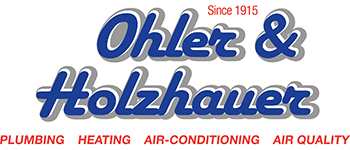It’s always nice when we manage to save money on our utility bills, but you should know there’s a way to lower energy use, even when you’re not even home.
The key is your thermostat. By learning more about its special features and settings, you can structure its daily schedule around your personal preferences. That means you can have different temperature settings for when you’re home, away or even when you’re sleeping.
With a few simple adjustments, you’ll be able to enjoy comfortable temperatures while keeping more money in your pocket. Check out our guide on how your thermostat doesn’t have to use up all your summer spending money:
While at Home
Whenever you’re at home, you want to enjoy a comfortable temperature. That’s why it’s best to set your thermostat lower in the summer if you’re indoors to make the most of the cool air.
But the ideal temperature for the summer is actually around 78 and 80 degrees Fahrenheit. By adjusting things a few degrees, you’ll avoid the worst of summer while still keeping your energy bills low.
While Away
If you’re setting the temperature for whenever you’re gone, it’s extremely common to move the thermostat higher than you would if you were in the house.
For some homes, you can set the temperature as high as 88 degrees while no one is home before lowering it back to the sweet spot of 78-80 degrees when you or a family member return. This way, your air conditioning unit won’t be working overtime to cool an empty house.
While Sleeping
For a full night’s rest during summer weather, you want a nice cool temperature. You should try and keep things between 68-72 degrees Fahrenheit. You won’t have to worry about getting too hot or too cold while you’re trying to sleep.
Other Ways to Use Less Energy:
- Smart thermostat installation: Trying a smart thermostat in the summer is an excellent way to reduce energy costs since it can plan your temperature adjustments according to your lifestyle and personal preferences. A smart thermostat manages the temperature if you are home or sleeping, while allowing it to warm up when the house is empty. With reliable brands like the Lennox iComfort, you have the ability to remotely access and change the temperature through your smartphone, tablet or laptop. Scheduling smart thermostat installation in your Port Clinton home is an effortless way to set the correct temperature even when you aren’t home.
- Replace current equipment with a newer HVAC system: A new HVAC system is another great option for long-term energy savings. With greater energy efficiency, you can also count on lower utility bills since more efficient equipment requires less energy to reach your preferred temperatures. Air conditioning installation in Port Clinton is a great way to beat the heat in the summer.
- Stay on top of routine AC maintenance: Whether or not you keep up with regular air conditioning maintenance in Port Clinton can have a significant impact on your utility bills. With regular cleaning of the coils, checking for damage and clearing ventilation of dust and debris, you may notice your HVAC system run more efficiently. More efficient operation reduces strain on key parts and lowers operational costs, resulting in lower energy usage and subsequently, smaller bills.
- Clean or replace the air filter on a regular basis: Cleaning or replacing the air filter regularly saves money by keeping airflow as smooth and consistent as possible. When filters become clogged, air conditioners have to work harder, and this greater strain could shorten the system’s life span and result in breakdowns.
- Check your attic insulation: Insulation is one of the key components in any energy-efficient home, securing the hot air outside and the cool air inside through summer. The North American Insulation Manufacturers Association (NAIMA) offers an official recommendation stating homeowners in souther states should install at least 13-14 inches of insulation, while states further north need 16-18 inches.
- Check your ductwork: Damage to the ventilation is capable of increasing your energy bills much more than 20 percent, plus it can potentially allow harmful emissions from your water heater, clothes dryer and other appliances to get into the atmosphere of your home. Finding any leaks fast and sealing them can address both concerns.
- Seal all other leaky spots in your home: Finding and sealing any remaining leaks in your home with caulk, foam sealant or weather-stripping can help keep it cooler on hot summer days. Don’t forget to check for any gaps around windows, doors and even outdoor fixtures. Devoting time and effort to sealing leaks now can help you save a lot in the long term.
